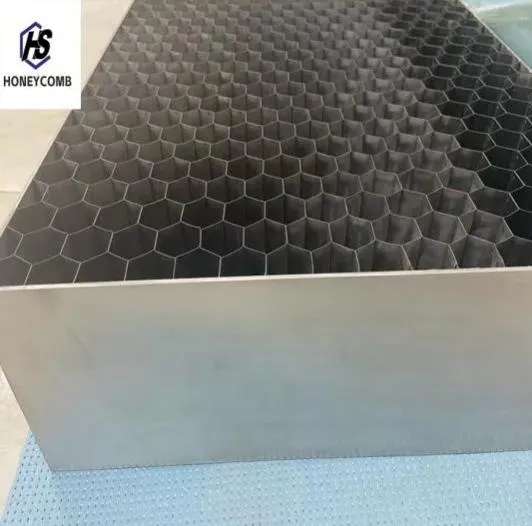
- Afrikaans
- Albanian
- Amharic
- Arabic
- Armenian
- Azerbaijani
- Basque
- Belarusian
- Bengali
- Bosnian
- Bulgarian
- Catalan
- Cebuano
- China
- China (Taiwan)
- Corsican
- Croatian
- Czech
- Danish
- Dutch
- English
- Esperanto
- Estonian
- Finnish
- French
- Frisian
- Galician
- Georgian
- German
- Greek
- Gujarati
- Haitian Creole
- hausa
- hawaiian
- Hebrew
- Hindi
- Miao
- Indonesian
- Italian
- Japanese
- Javanese
- Malay
- Persian
- Portuguese
- Punjabi
- Russian
- Spanish
- Swahili
- Telugu
- Vietnamese

Precision Starts Here: Revolutionizing Airflow Control with Honeycomb Wind Tunnel Solutions
In the world of aerodynamic testing, control is everything. With the introduction of advanced honeycomb wind tunnel systems by AeroStruct Technologies, the precision and consistency of airflow dynamics have reached a new frontier. These systems are engineered not just for performance but for perfection—minimizing turbulence, optimizing noise suppression, and achieving unparalleled flow uniformity across aerospace, automotive, and academic applications.

The Synergy Between Screen and Honeycomb Wind Tunnel Technology
One of the most critical aspects of wind tunnel design lies in the upstream flow-conditioning system, where both screens and the honeycomb wind tunnel play pivotal roles. The screen serves to diffuse large eddies and equalize pressure across the section, but it cannot by itself eliminate small-scale turbulence or directional deviations. This is where the wind tunnel honeycomb design becomes indispensable.
Placed directly downstream of the screen, the wind tunnel honeycomb restricts lateral airflow components by forcing the airstream through narrow, parallel channels. This combination creates a synergistic effect: the screen dampens energy while the honeycomb imposes directional uniformity. Together, they transform chaotic inlet conditions into a smooth, laminar flow ideal for accurate aerodynamic testing. AeroStruct’s proprietary wind tunnel honeycomb design ensures minimal pressure drop while enhancing linearity, ensuring that downstream components experience steady, high-fidelity air patterns.
Reducing Turbulence with Honeycomb Air Flow Straighteners
A key performance indicator in any wind tunnel is turbulence intensity. Without proper flow conditioning, high turbulence levels can distort test results, especially in low-speed aerodynamic simulations. AeroStruct’s honeycomb air flow straightener technology dramatically lowers turbulence by guiding air molecules into a uniform, longitudinal direction.
Each honeycomb air flow straightener is crafted from precision-extruded aluminum or aramid honeycomb material with controlled cell diameter and length-to-width ratio. These parameters are selected based on the target Reynolds number and tunnel velocity range. The design effectively interrupts lateral and swirling components, reducing turbulence levels by up to 90% in some configurations. This not only improves test accuracy but also lowers energy consumption by reducing pressure losses through the test section.
Whether testing vehicle aerodynamics or developing UAV prototypes, the addition of a honeycomb wind tunnel system allows for more consistent readings, fewer retests, and a controlled environment that mirrors real-world conditions.
Acoustic Noise Suppression via Wind Tunnel Honeycomb
High-velocity airflow in tunnels often generates unwanted acoustic noise, which can interfere with sensitive instrumentation and create hazardous testing environments. AeroStruct’s wind tunnel honeycomb systems offer a surprising advantage: effective suppression of flow-induced acoustic noise.
The structured layout of the wind tunnel honeycomb acts as a physical and acoustic dampener. As airflow passes through the honeycomb’s narrow channels, pressure fluctuations and vortices are broken down into smaller, lower-energy waves. This naturally suppresses the amplitude of broadband noise and mitigates tonal frequencies generated by upstream fans or obstructions.
Tests in anechoic chambers and subsonic tunnels show that incorporating a honeycomb wind tunnel segment can reduce overall sound pressure levels by up to 6 dB, making it a vital addition for research facilities working on noise-sensitive projects such as electric vehicle aerodynamics or stealth aircraft profiles.
Custom Wind Tunnel Honeycomb Design for Every Sector
Recognizing the diversity of testing needs, AeroStruct offers modular and customizable wind tunnel honeycomb design options. These can be tailored based on tunnel size, operating speed, environmental conditions, and even acoustical properties. Whether for automotive wind tunnels, university research labs, or large-scale aerospace facilities, each honeycomb air flow straightener is engineered with exacting tolerances to meet performance and safety standards.
Additionally, AeroStruct integrates vibration-resistant mounting systems and corrosion-resistant coatings, ensuring that each honeycomb wind tunnel section performs reliably over years of continuous operation. Optional integration with automated flow-monitoring sensors allows real-time analysis of turbulence and acoustic profiles, giving engineers total control over their experimental setups.
With increasing demand for high-precision wind tunnel testing around the globe, AeroStruct’s scalable wind tunnel honeycomb solutions are redefining what's possible in aerodynamic validation.
Honeycomb Wind Tunnel FAQs
What is the primary function of a honeycomb wind tunnel?
The main function of a honeycomb wind tunnel is to straighten the airflow, reduce turbulence, and ensure directional consistency. This enhances test reliability and allows more accurate measurements during aerodynamic evaluations.
How does a honeycomb air flow straightener reduce turbulence?
A honeycomb air flow straightener channels air through small, parallel cells that eliminate lateral and swirling components. This streamlines the airflow and significantly reduces turbulence intensity.
Can wind tunnel honeycomb design be customized for specific projects?
Yes, AeroStruct offers fully customizable wind tunnel honeycomb design solutions. Engineers can choose material types, cell size, length, and mounting options tailored to their tunnel’s operating conditions.
Does a wind tunnel honeycomb affect acoustic noise levels?
Absolutely. The wind tunnel honeycomb structure helps dampen acoustic noise by diffusing turbulent pressure waves and reducing high-frequency components in the airflow.
What materials are used in manufacturing honeycomb air flow straighteners?
AeroStruct uses high-strength aluminum and lightweight aramid composite materials to construct honeycomb air flow straighteners, ensuring both durability and optimal flow conditioning performance.
Products categories
-
Why Vented Aluminum Honeycomb Is Leading the Way in Shielding and Ventilation SolutionsNewsJul.18,2025
-
Why Stainless Steel Honeycomb Panel is the Ultimate Choice for High-Tech Shielding and ProtectionNewsJul.18,2025
-
Why Honeycomb Strips Are Revolutionizing High-Speed Sealing SolutionsNewsJul.18,2025
-
Shielded Glass Innovation Powers the Future of Electromagnetic ProtectionNewsJul.18,2025
-
Elevate Industrial Performance with Precision-Engineered Steel Honeycomb Core SolutionsNewsJul.18,2025
-
Vented Aluminum Honeycomb: A Smart Shield for Airflow and EMI ControlNewsJul.11,2025
-
Steel Honeycomb Core: The Backbone of Structural ExcellenceNewsJul.11,2025















